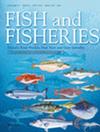Panmictic Panacea? Demonstrating Good Practices for Developing Spatial Stock Assessments Through Application to Alaska Sablefish (Anoplopoma fimbria)
IF 6.1
1区 农林科学
Q1 FISHERIES
引用次数: 0
Abstract
Marine species and associated fisheries demonstrate complex spatial dynamics driven by biological, ecosystem and socioeconomic factors and integrating these spatial dynamics into stock assessment models can improve fishery management advice. While preliminary good practices for developing spatial stock assessment models have been proposed, comprehensive demonstrations applying these practices remain limited. Drawing on these good practices, we provide an end‐to‐end demonstration of developing a spatial stock assessment using Alaska sablefish (随机交配的灵丹妙药?通过在阿拉斯加黑貂(anoploopoma fbriia)上的应用展示开发空间种群评估的良好做法
海洋物种和相关渔业表现出由生物、生态系统和社会经济因素驱动的复杂空间动态,将这些空间动态纳入种群评估模型可以改善渔业管理建议。虽然已经提出了开发空间种群评估模型的初步良好做法,但应用这些做法的综合示范仍然有限。根据这些良好的实践,我们提供了一个端到端使用阿拉斯加黑貂(Anoplopoma fimbria)开发空间资源评估的演示。我们的演示强调了高分辨率数据分析和概念模型的效用,为关键模型结构决策提供信息,空间和空间聚合模型的联合开发,以增强对种群动态的理解,以及在空间评估中整合标记数据和诊断工具的进一步指导的必要性。空间模型强调了貂鱼生物量、数量和年龄结构的区域差异,但总体种群估计与空间聚合模型的输出基本一致。此外,空间模型还确定了这种高流动性物种的个体发生运动模式。总的来说,阿拉斯加貂鱼的空间汇总模型可能足以提供管理建议,但定期的空间模型更新可以提供对空间动态和区域枯竭水平的见解。因此,我们建议同时使用两种模型:空间聚合模型用于通报种群范围的状况,空间模型用于通报空间渔业动态和局部枯竭。sablefish的应用代表了最近提出的良好实践的空间种群评估的第一个实现之一,通过强调关键决策点和分析,在开发空间种群评估时解决这些问题,为未来的从业者提供了有价值的指导。
本文章由计算机程序翻译,如有差异,请以英文原文为准。
求助全文
约1分钟内获得全文
求助全文
来源期刊

Fish and Fisheries
农林科学-渔业
CiteScore
12.80
自引率
6.00%
发文量
83
期刊介绍:
Fish and Fisheries adopts a broad, interdisciplinary approach to the subject of fish biology and fisheries. It draws contributions in the form of major synoptic papers and syntheses or meta-analyses that lay out new approaches, re-examine existing findings, methods or theory, and discuss papers and commentaries from diverse areas. Focal areas include fish palaeontology, molecular biology and ecology, genetics, biochemistry, physiology, ecology, behaviour, evolutionary studies, conservation, assessment, population dynamics, mathematical modelling, ecosystem analysis and the social, economic and policy aspects of fisheries where they are grounded in a scientific approach. A paper in Fish and Fisheries must draw upon all key elements of the existing literature on a topic, normally have a broad geographic and/or taxonomic scope, and provide general points which make it compelling to a wide range of readers whatever their geographical location. So, in short, we aim to publish articles that make syntheses of old or synoptic, long-term or spatially widespread data, introduce or consolidate fresh concepts or theory, or, in the Ghoti section, briefly justify preliminary, new synoptic ideas. Please note that authors of submissions not meeting this mandate will be directed to the appropriate primary literature.
 求助内容:
求助内容: 应助结果提醒方式:
应助结果提醒方式:


